
Piercing the veil
A new exhibition at Buxton Contemporary finds a rich complexity in the shadowy terrain between life and death.
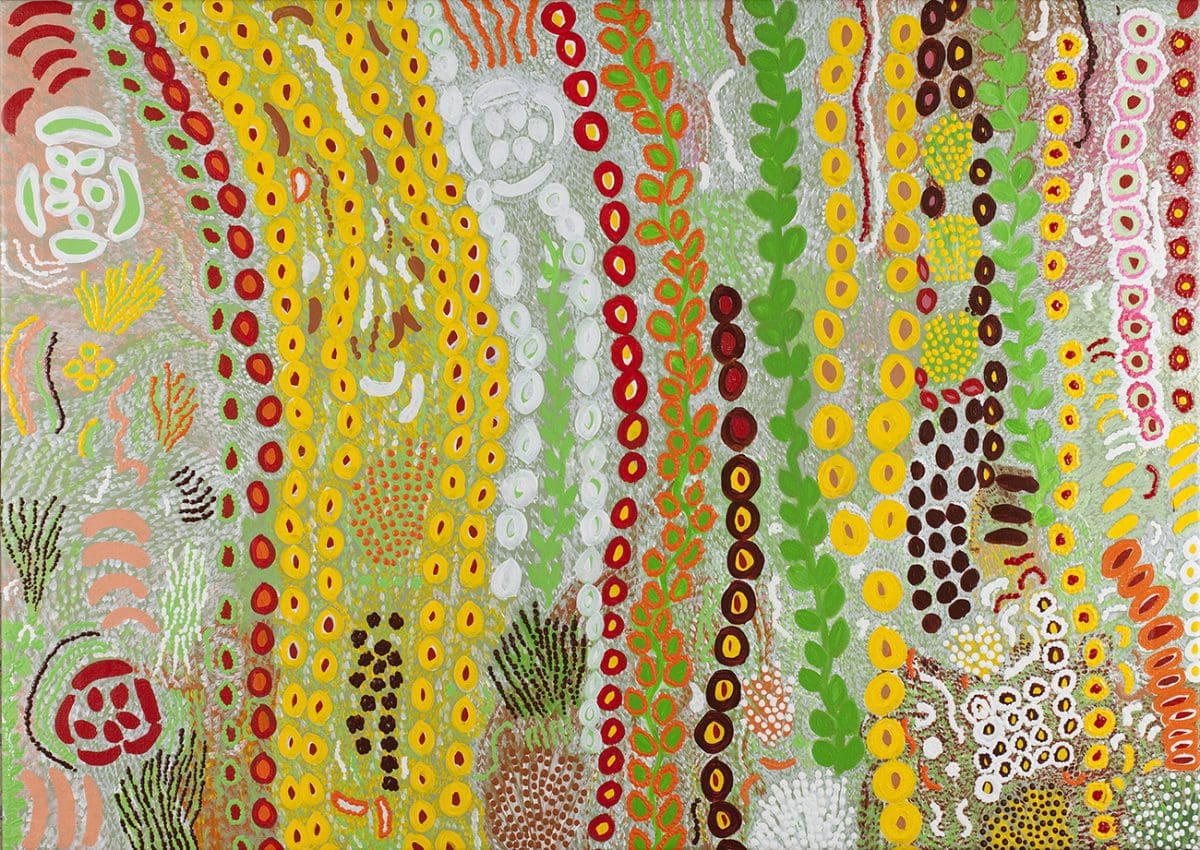
Violet Samson, Bush seeds through Country, 2012, synthetic polymer paint on canvas, 85 x 120.2cm. State Art Collection, Art Gallery of Western Australia Gift of Rio Tinto Iron Ore, 2013 © Violet Samson, 2012.
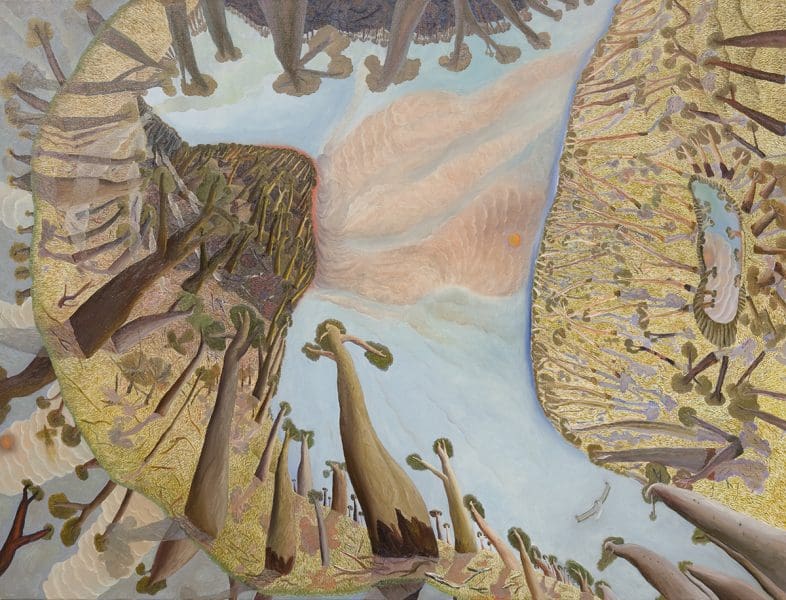
William Robinson, Fire mountain landscape from The Creation series (series of 5 paintings), 1988 oil on linen, 147.2 x 193cm each State Art Collection, Art Gallery of Western Australia Purchased 1989.

A B Webb, Felling a Karri tree, Western Australia, 1929, lithograph, 102 x 151cm. State Art Collection, Art Gallery of Western Australia Purchased through the Sir Claude Hotchin Art Foundation, Art Gallery of Western Australia Foundation, 1993.
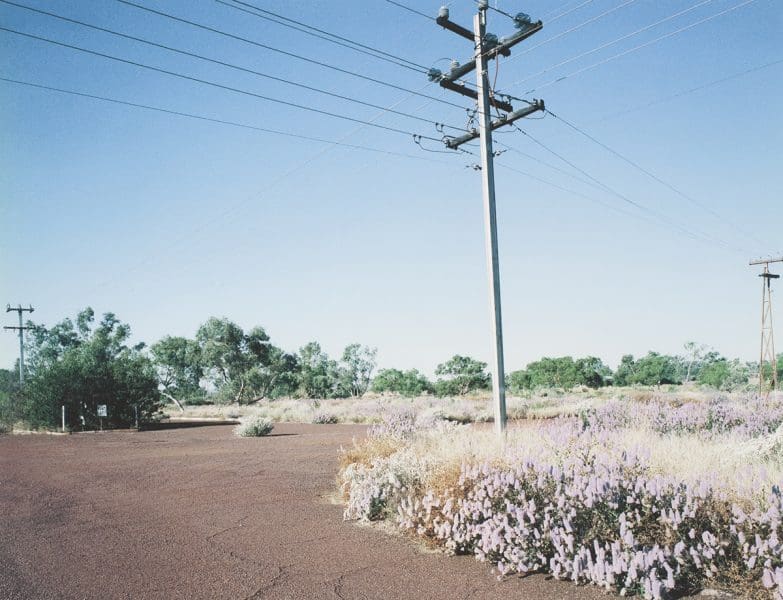
David Goldblatt, George Toths’ open air picture garden and cafe from Wittenoom photographs, 1999, inkjet print on paper 35.5 x 43.5 x 3 cm (framed) State Art Collection, Art Gallery of Western Australia Gift of David Goldblatt, 2000.
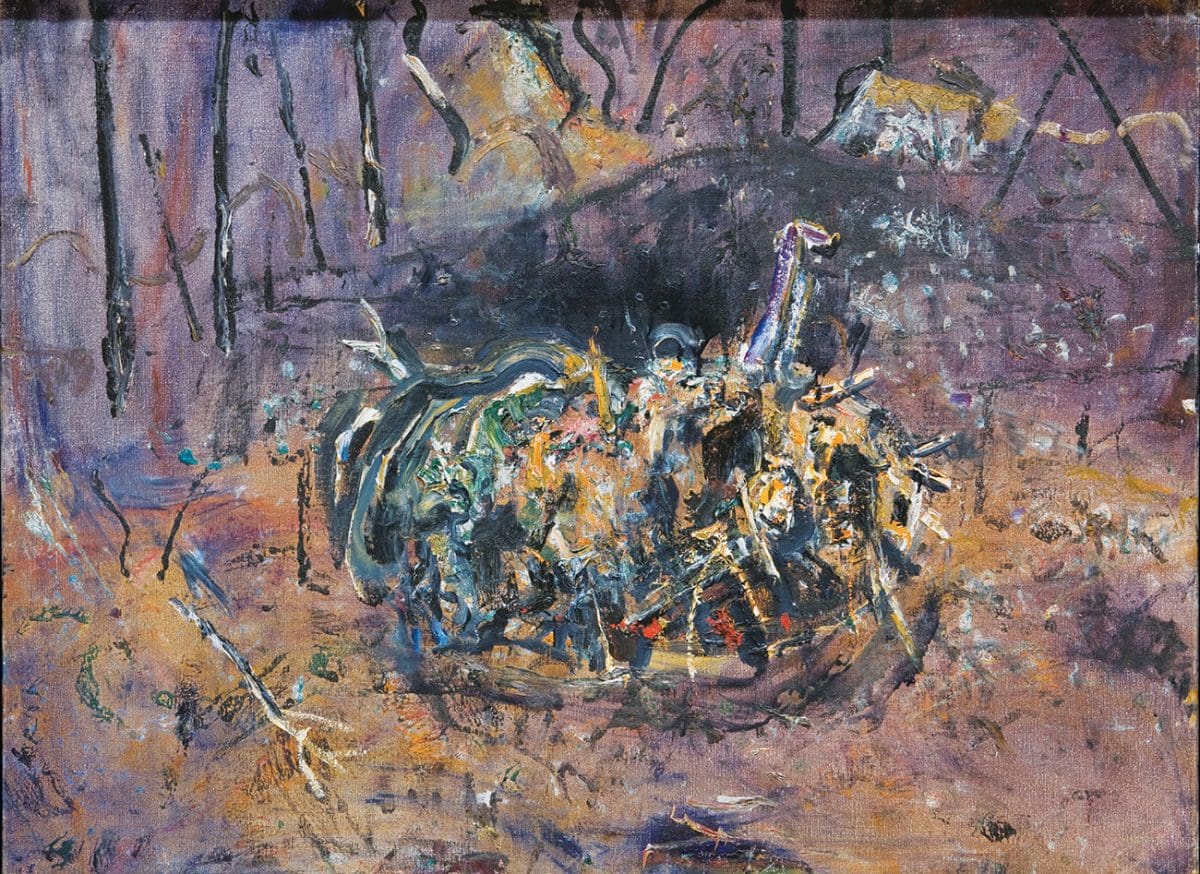
Fred R Williams, Burning stump, 1976, oil on canvas, 56.7 x 76.4 cm (sight) State Art Collection, Art Gallery of Western Australia Gift of Lyn Williams, 2001 © Estate of Fred Williams.
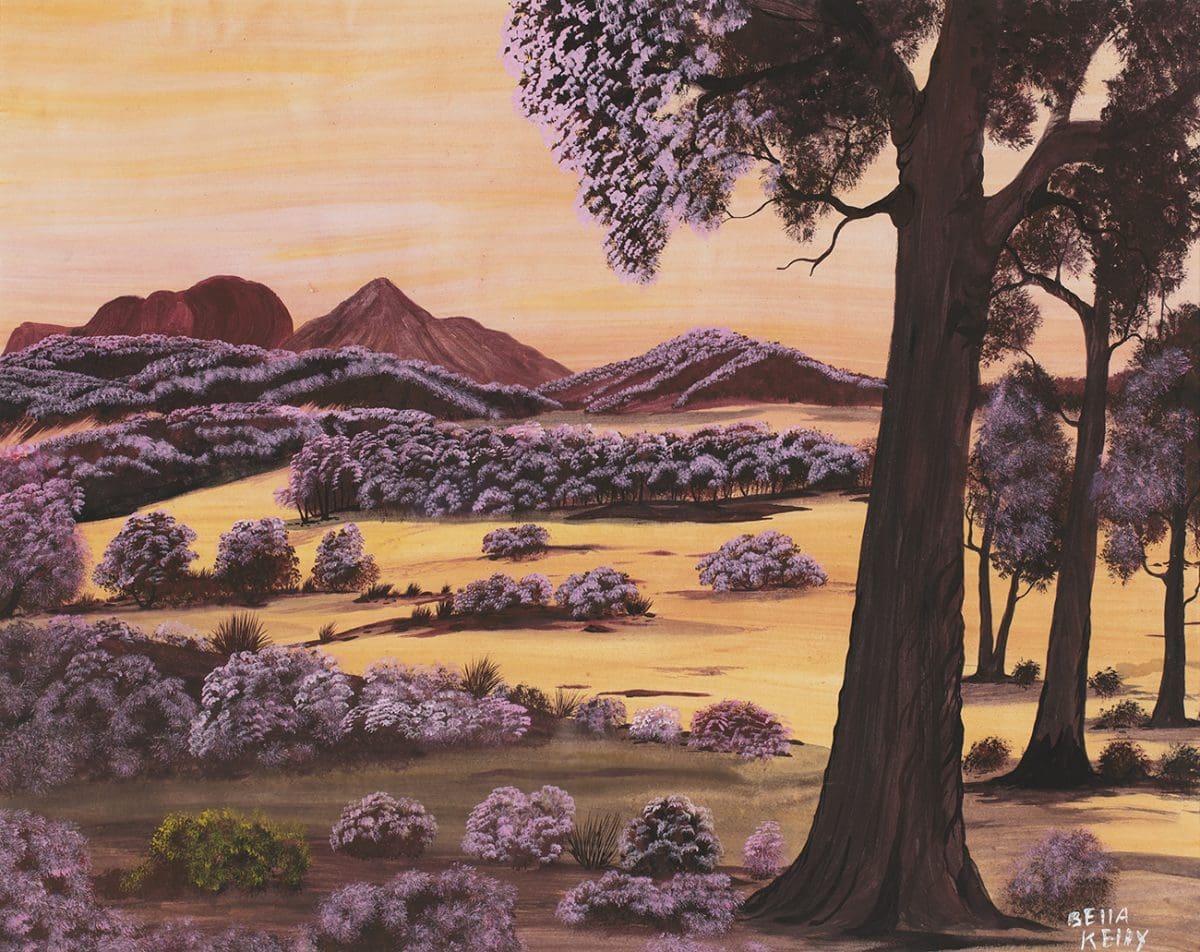
Bella Kelly, Untitled (SW landscape), 1969, gouache 50.9 x 63.7 cm (image) State Art Collection, Art Gallery of Western Australia Purchased 2001.
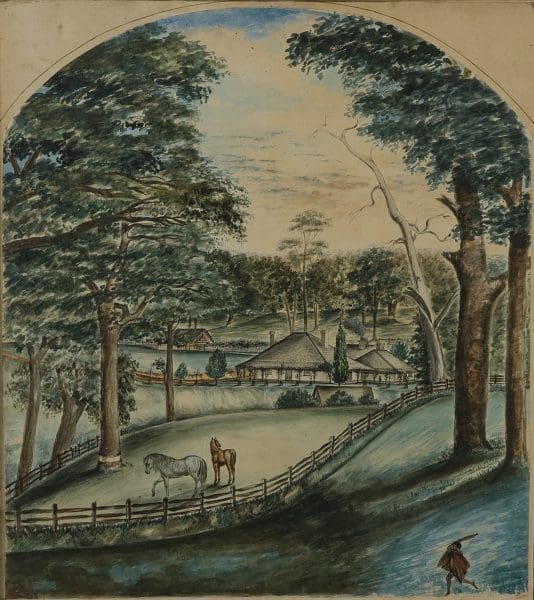
Unknown (initial W), St. Leonard’s: The property of E.P. Barrett Lennard Esquire, Swan River, Western Australia c 1840s watercolour and ink 46 x 41 cm (irregular, rounded top corners) State Art Collection, Art Gallery of Western Australia Purchased through the Sir Claude Hotchin Art Foundation, Art Gallery of Western Australia Foundation, 2010.
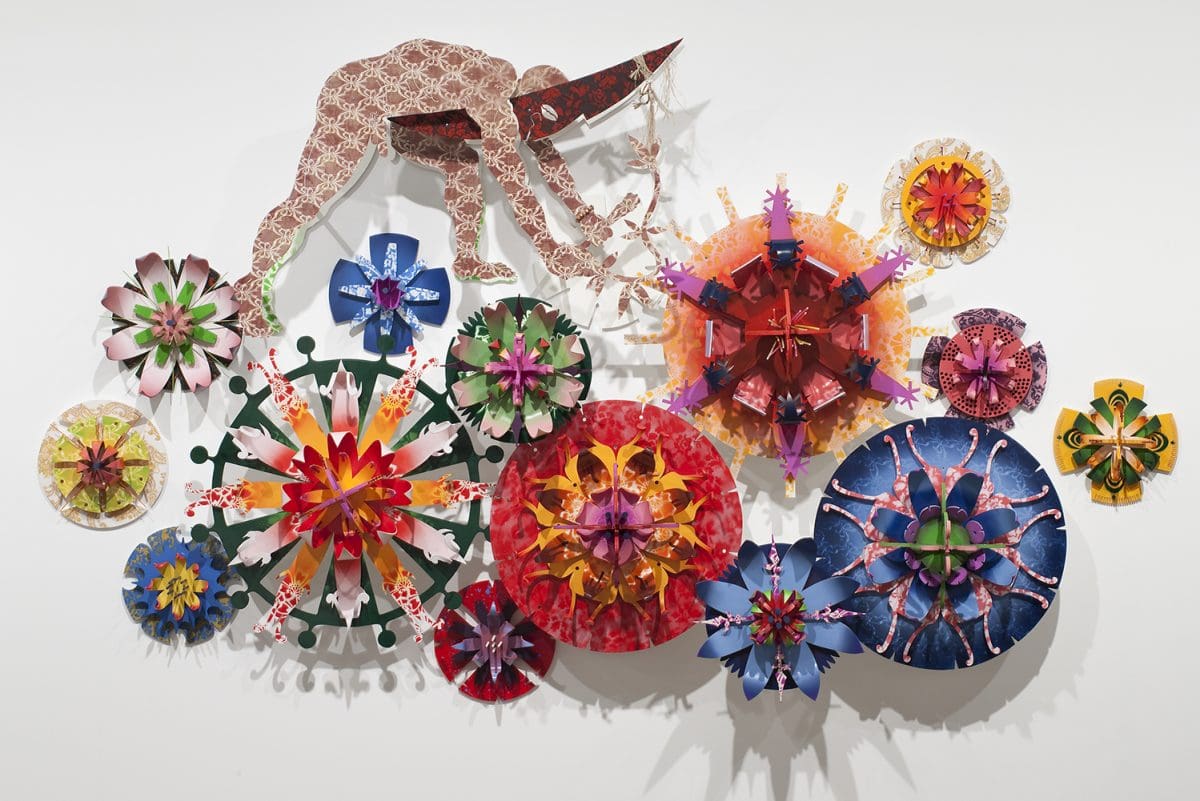
Brian Robinson, …and meanwhile back on earth the blooms continue to flourish, 2013, wood, plastic, steel, synthetic polymer paint, feathers, plant fibre and shell 200 x 350 x 50 cm State Art Collection, Art Gallery of Western Australia Purchased through The Leah Jane Cohen Bequest, Art Gallery of Western Australia Foundation, 2014 © Brian Robinson, 2013.
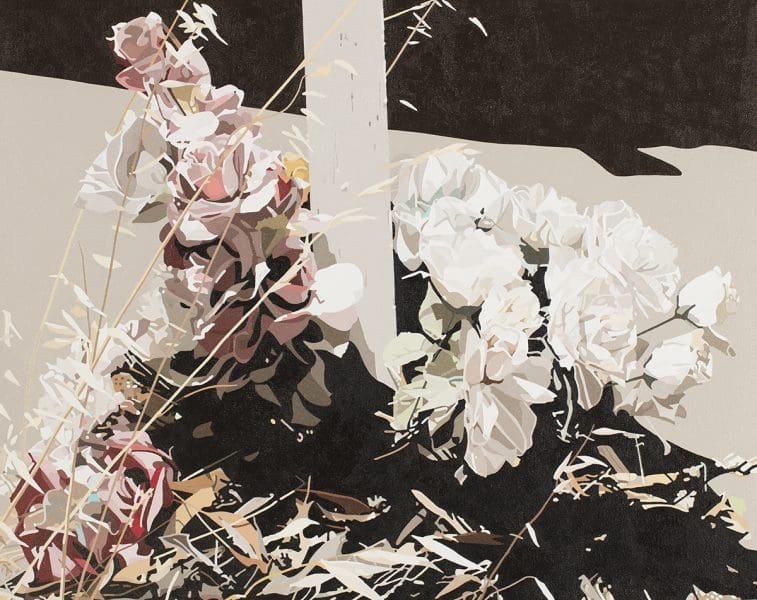
Siné MacPherson, John, 2016, oil on canvas, 46.2 x 58.1cm. State Art Collection, Art Gallery of Western Australia Purchased through the Art Gallery of Western Australia Foundation: TomorrowFund, 2016.
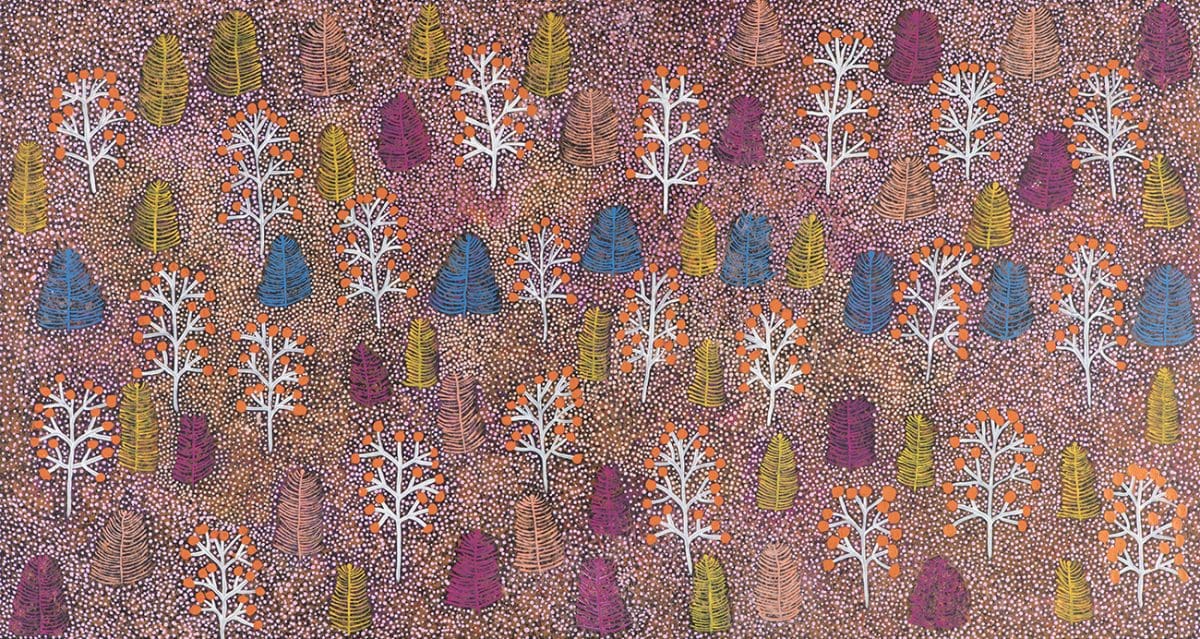
Jill Churnside, Country in bloom, 2017, synthetic polymer paint on canvas, 87.8 x 166.4cm. (painting) 90.8 x 169 cm (framed) State Art Collection, Art Gallery of Western Australia Gift of Rio Tinto, 2017.
From north to south and across its wide flank, the mostly subarid state of Western Australia is punctuated by strips of lush coastal habitat, with sparsely wooded areas giving way to the dramatic landscapes of the Pilbara and the Kimberley region. Bordered on one side by great swathes of desert and an ocean on the other, its isolation has led to incredible biodiversity: of 12,000 types of wildflower, over half are not found anywhere else on Earth.
Positioning the staggering diversity of nature at the centre of The Botanical: Beauty and Peril, curators from the Art Gallery of Western Australia (AGWA) and the Janet Holmes à Court Collection have selected works from their vaults to address how our perceptions of the natural world have changed over time. Part of the What on Earth project, a Western Australian initiative connecting several galleries through nature-themed exhibitions, The Botanical contains more than 200 artworks, with a particular focus on Indigenous, colonial and contemporary examples completed in the last two centuries.
Melissa Harpley, curator of 19th-century art at the AGWA, explains how the works included in The Botanical reflect change. “The more historical pieces tend not to see the natural world as under threat – it is still a place which is rich in potential for exploitation, be it through logging timber, clearing land for agriculture or the gathering of scientific information about individual plant species,” she says. “In comparison, the concern with the natural environment differs among contemporary artists; some comment on the challenges that human activity presents, while others use it as inspiration for their artmaking in a more formal sense.”
Adding to this dialogue are a cluster of Florence Hildegard Bassett’s wildflower illustrations from the early 1900s and an installation of photography and sculpture by Canadian-born, Perth-based artist Eva Fernandez. Fernandez’s image Anigozanthos flavidus, 2011, depicts robust, flowering stems of yellow kangaroo paw protruding from the decimated innards of an antique chair. With springs sagging and stuffing strewn below, the flowering chair belongs to [terra] australis incognita, 2011 a broader photographic series Fernandez produced to visually interpret the folly and bravado of the early settlers. One colonial administrator in particular, James Stirling, is linked to the foundation of Perth – it was he who described the Swan River as an ideal site for a settlement. Yet the party of settlers arriving in 1829 were greeted with poor soil and harsh winter storms. In Fernandez’s work, genteel Western furniture is obliterated by the alien forms of the flora.
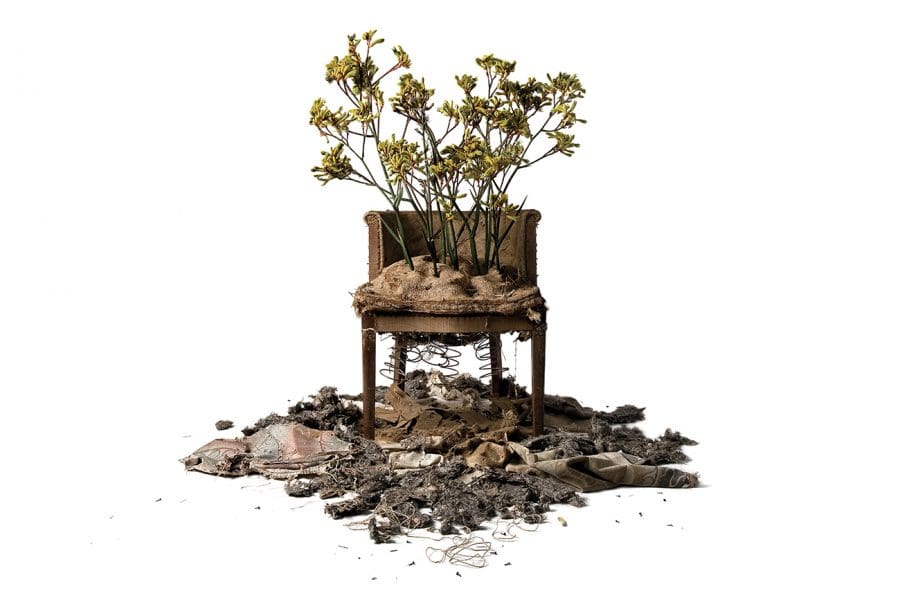
“Anigozanthos flavidus surrounded by Bassett’s wildflowers demonstrates how the contemporary and historical play off each other,” says Laetitia Wilson, exhibitions manager of the Janet Holmes à Court Collection. “The exhibition follows a narrative about our relationship to the natural world in Australia and it is told from both a colonial perspective and an Indigenous perspective. We wanted a balance between these two views and each of the works included speak to this narrative.”
A key piece in The Botanical is a large collection of silks from the Utopia Women’s Batik Group in Central Australia. Hanging freely in a central space, the delicate swathes of fabric form an immersive forest of colour and pattern that includes a batik designed by founding member, Emily Kame Kngwarreye (1910-1996). Megan Schlipalius, collection registrar of the Janet Holmes à Court Collection describes the silks’ importance as documentations of Country.
A number of new artworks have been commissioned to respond to the historical pieces and among these is a large-scale projection by media artist Sohan Ariel Hayes. Known for his involvement in the 2017 Perth International Arts Festival Kings Park installation, Boorna Waanginy: The Trees Speak – a light show projecting Dreamtime stories into a lengthy stretch of illuminated tree tops – for The Botanical, Hayes has reinterpreted a landscape panorama by colonial artist Robert Dale. Retelling the image from a contemporary viewpoint, “Hayes incorporates environmental issues, the extinction of whole species and relations between Indigenous people and non-Indigenous people today,” says Wilson. “You can’t present an image like Dale’s without also being aware of ideological context, as what he was painting was basically propaganda in the form of a real estate poster. By overlaying additional information, Hayes provides a contemporary critique of Dale’s colonial history.”
A wide-ranging exhibition highlighting the breadth of two of Western Australia’s major art collections, The Botanical lays bare the shifting and complex relationship humans have with the natural environment, using art to celebrate natural diversity, question our methods of intervention and challenge us to do better. “The environment exists in our lives as something beautiful and breathtaking but at the same time, there is an increasing awareness it is very much in peril,” Wilson says. “The beauty we have within our reach now, is at risk for future generations. We can’t just look at pretty pictures of flowers, we have to delve into the deeper issues our world is facing today.”
The Botanical: Beauty and Peril
Art Gallery of Western Australia
6 July—7 October
This article was originally published in the July/August 2019 print edition of Art Guide Australia.